Let us know what type of content you'd like to see more of. Fill out our three question survey.
5 Secret Sauces for Your Next Digital Safety Campaign: Insights from Thailand
Jan 12, 2022
In a previous blog on Five Fresh Tips to Make Digital Safety Cool Again: A Case Study from Thailand, we discussed lessons learned from implementing the ‘Wai Kid Digital’ Challenge, a series of virtual training bootcamps with university students on digital safety and creative video production. Looking back two months after the activity wrapped up, here are our top suggestions for your next digital safety campaign:
-
Build private sector partnerships that create shared value
-
Use hybrid approaches to engage Gen Z
-
Embed experience-based learning and networking opportunities
-
Localize your content to pave way for sustainability
-
Evolve your approach to capture the real story
The Digital Asia Accelerator, part of the U.S. Government’s Digital Connectivity and Cybersecurity Partnership, partnered with Facebook Thailand and Love Frankie (a local social change agency) to design and launch the Challenge. We then collaborated with nearly 400 university students around the country to demystify digital safety and educate the public about digital safety and identity, positive online communication, news literacy, and critical thinking through creative videos.
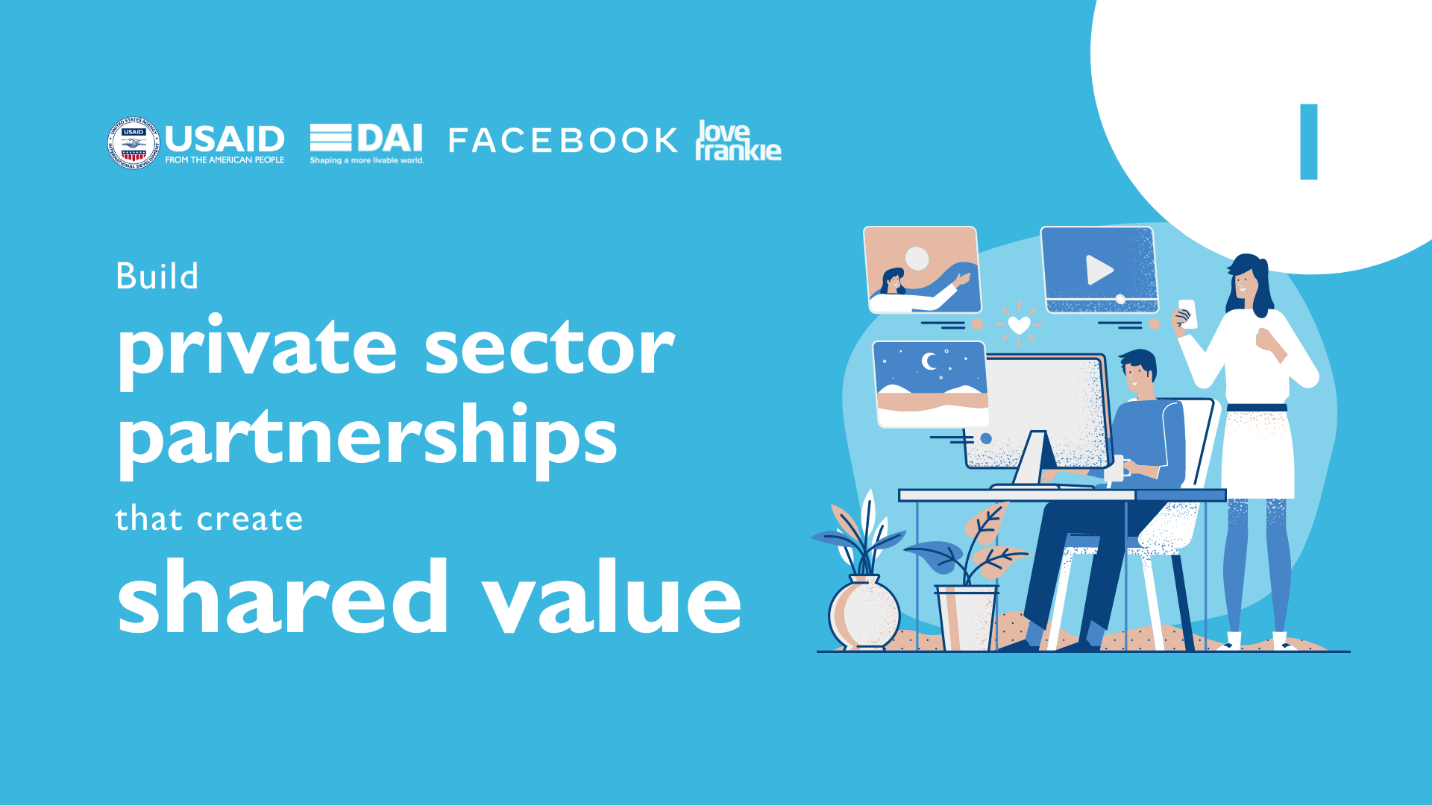
The first secret sauce to spice up your next digital safety campaign is to build private sector partnerships that create shared value. How might that look in practical terms?
The Accelerator’s and Facebook’s shared goal was to equip young people with digital skills to help the Thai public thrive online—creatively, securely, and ethically. Creating shared value would require us to work together to achieve that goal. Within that shared goal, the Accelerator’s specific objective was to raise people’s awareness of how to stay safe online, while Facebook Thailand’s objective was building positive online communities and helping young people share their voices creatively.
From a resource standpoint, we both brought key assets to the table. The Accelerator and the U.S. Agency for International Development (USAID) brought financial support, program management, and development expertise, resulting in a digitally inclusive strategy, customized training curriculum, and strong program execution. From Facebook’s side, its brand value and ad credits enabled the campaign to reach and capture the attention of a much larger audience vs. what we would have been able to reach on our own. While USAID has improved lives around the world over the past 60 years, it isn’t a common household brand for some communities in Thailand. Thais on average spent more than 11 hours on the internet per day in 2020, and 98 percent of Thais use Facebook. The partnership with Facebook Thailand thus gave the program high visibility from the start. During the training bootcamp, experts from USAID and Facebook worked together to provide firsthand expertise and experience on digital inclusion and video creation to the students. This direct engagement was one of the most popular elements of training for the participants.
What this means for your program: At the beginning of program design, align on both partners’ vision, goals, and capabilities. Even if a partnership is not 100 percent perfect, it is still valuable and worth pursuing if it leverages each other’s capabilities towards achieving your objectives under a common goal.
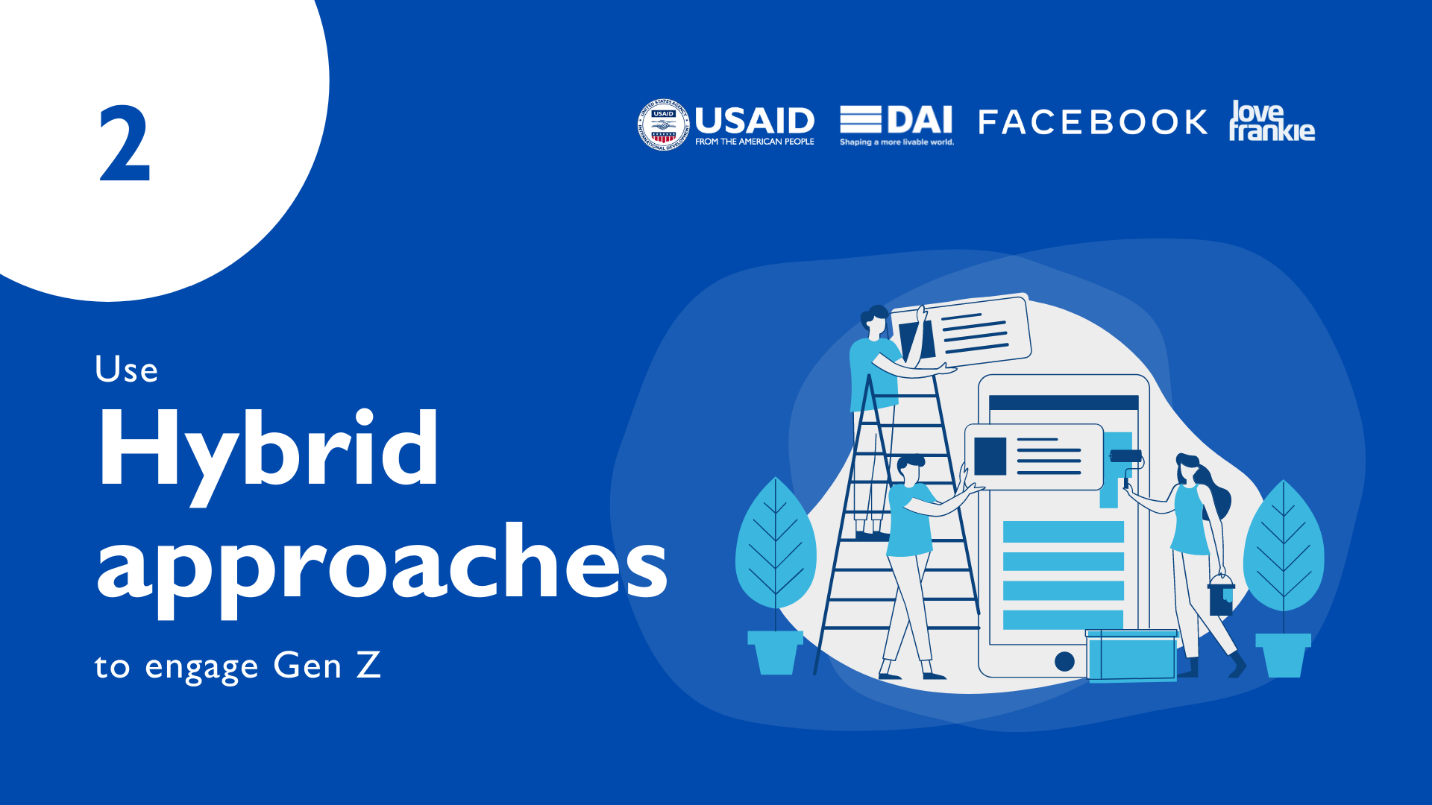
Many of us experienced loneliness and Zoom fatigue during lockdowns throughout COVID-19 outbreaks. Our Wai Kid Digital Challenge was no different. Having to shift from the design of in-person boot camps with students meant we lost some human connection (e.g., physically high fiving!). However, this Challenge also provided us with a new set of opportunities.
Some students reported that they appreciated the program being entirely virtual because it provided them with more flexibility to review the materials and discussions afterward without sacrificing their university time. One student said he particularly enjoyed the chance to interact with students from other universities during the bootcamp sessions, which would not have happened in the original plan for separate in-person events at each university. The same student recommended that if we have another iteration of the Wai Kid Digital Challenge, he would love to see a hybrid approach in which there are opportunities to learn from content online and interact with other participants in person. Such opportunities might be in the form of early joint meetings with all participating universities or in a post-summit gathering to celebrate their virtual bootcamp journeys. The participant told us it would have allowed him to share his thoughts and experiences on digital safety more organically with other students, without bandwidth or hardware challenges.
What this means for your program: Virtual engagements do not automatically mean less interaction! When planned well, these programs can even offer benefits beyond in-person events, particularly when it comes to accessing learning materials. When possible, consider how to include in-person interaction between participants and design hybrid approaches.
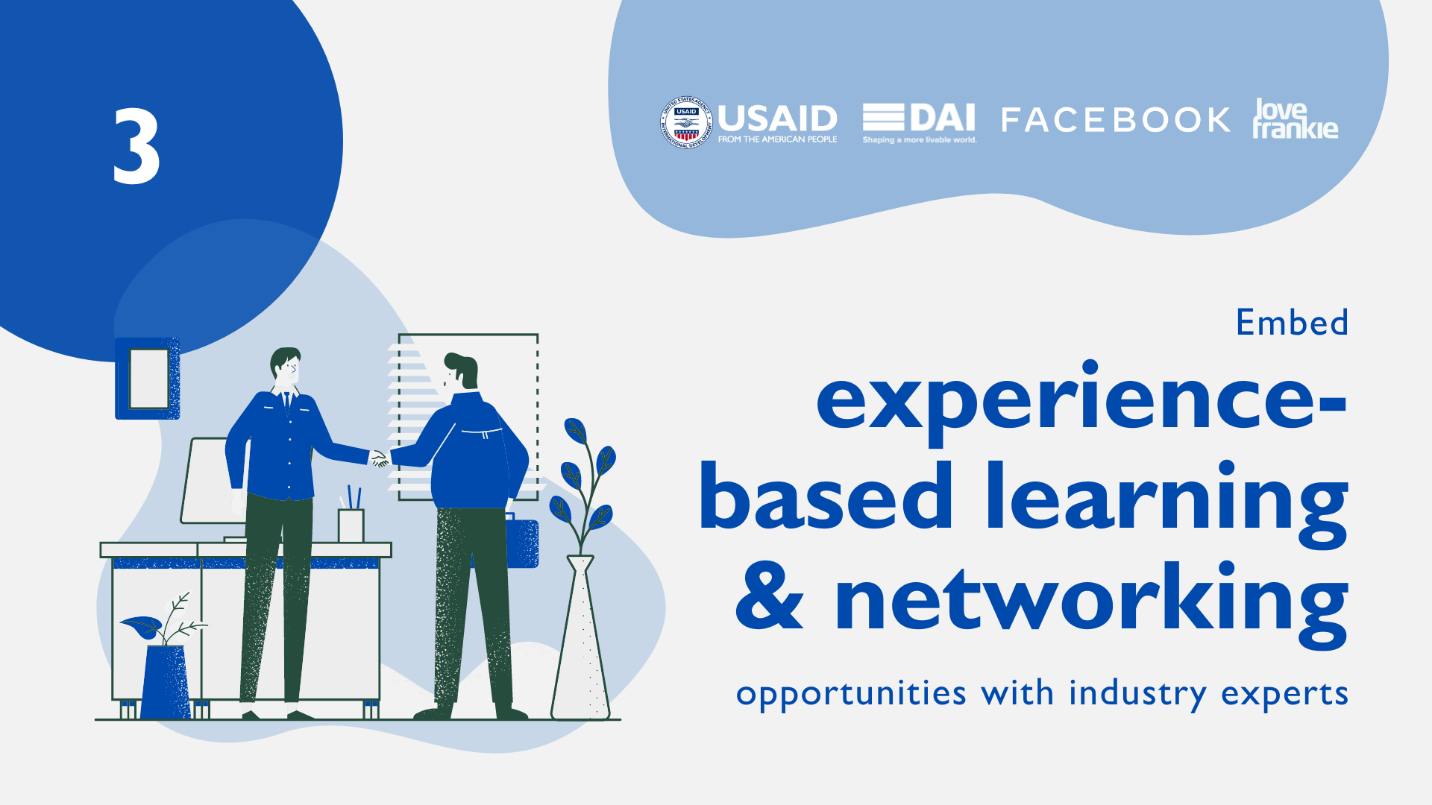
Many students expressed that they were looking forward to learning from industry experts (e.g., Facebook and Thai influencers) throughout the program—and wanted even more access to industry after the program ended.
More than 78 percent of program participants reported that getting the chance to pitch their ideas to USAID, Facebook, and Thai influencers was the most impactful part. This program gave young people an opportunity to learn real-world skills beyond their usual experiences in the classroom. One student said, “I think [the bootcamps are] already good but it’d be great to have more time to hear influencers speak about their experiences. Perhaps a Q&A session where we can ask questions.”
Another student reported learning more about diverse gender perspectives from a USAID staff member that better informed their video concept.
University instructors also appreciated the experience-based learning opportunities for students; one said, “Students got to work with the private sector, got close to people who work for social media platforms, and experts in the field. Their work will be commented [on] by experienced people. The students really enjoyed this. And they got to learn from experiences, rather than solely from academics.”
A student from the Challenge’s winning team reported that getting the chance to learn about digital safety and content production from professional content creators at Facebook and USAID gave him the skills, credibility, and confidence to apply for an internship. Networking and gaining access to professional experiences in Thailand is already hard for many Thai students in normal times, but it is even more challenging during COVID-19. He also shared that he may not have gotten this internship without his Wai Kid Digital experience.
What this means for your program: When planning learning interactions with Gen Z participants, embed hands-on learning activities with industry partners whenever possible. These opportunities—especially during COVID-19—provide young people with on-the-job learning and practical experiences that can help them stand out in the professional world.
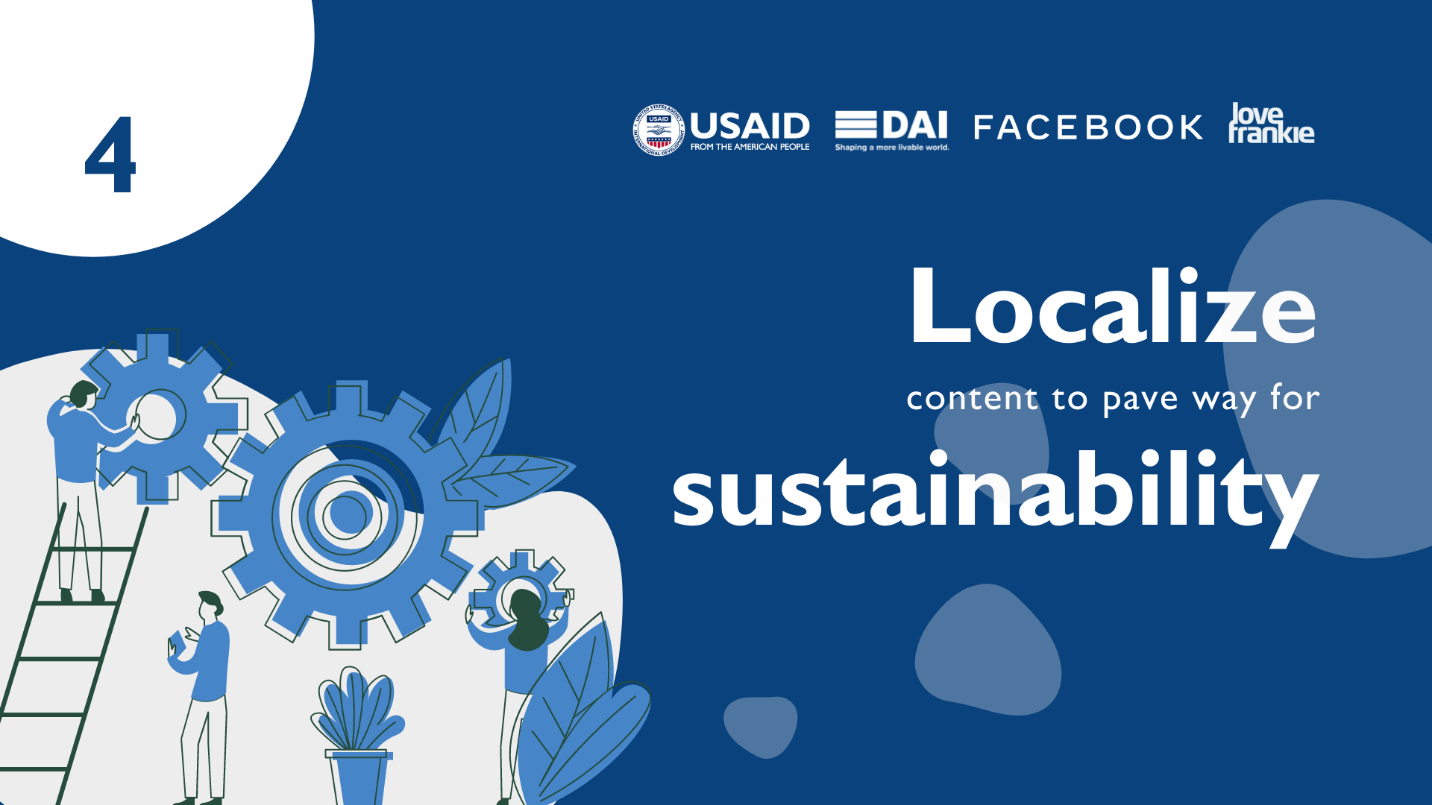
When working in the Southeast Asian context with Gen Z individuals, make sure that your content is tailored to them and localized to their environment.
Localization does not just mean translating a Silicon Valley curriculum into the local language and calling it a day. It requires an in-depth understanding of your participants’ technology needs and barriers, testing the content you develop in an iterative process, and contextualizing real-life examples in their environment. This takes a lot of effort—but the impact is worth the time and energy! More than half of the participants said they are likely to share what they learned from the Challenge with their peers because the content is relatable and can be applied to everyday scenarios.
With all the effort that goes through the localization process, the Accelerator is also looking for ways to encourage sustainability after USAID’s investment. To ensure that the program’s results continue, our partner Love Frankie is developing a toolkit to help universities implement their own digital safety challenges. We are also in discussion with universities about how to embed the digital safety modules developed from the Wai Kid Digital Challenge into the university curriculum—institutionalizing the key lessons into coursework.
What this means for your program: Understand your users’ needs, barriers, and context—and test the content with them. If the content is tailored, it’s more likely to stick. When the approach resonates with your users, it is easier to make a case for institutionalizing and sustaining the program with partners.
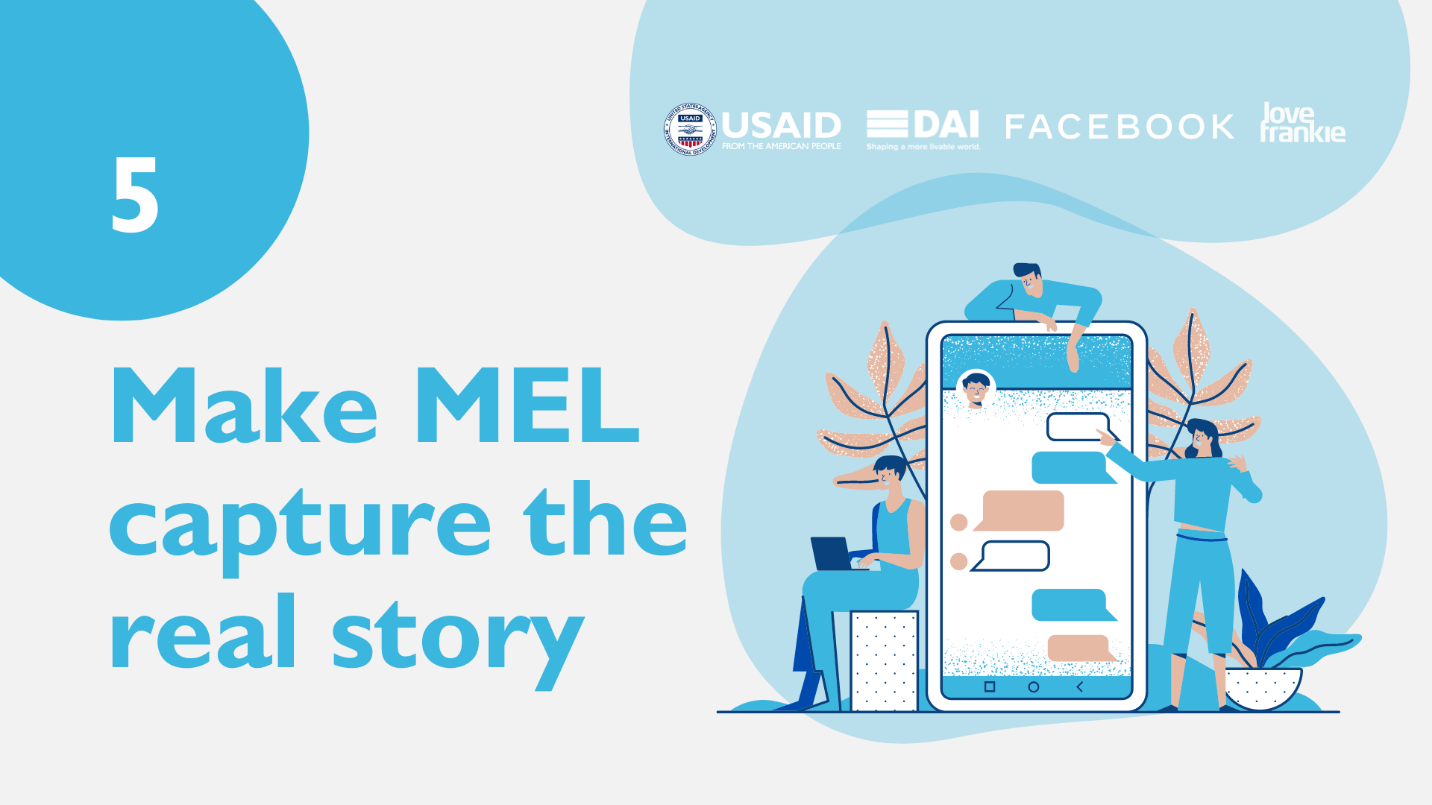
One of our biggest takeaways at the end of the Wai Kid Digital Challenge was that our monitoring, evaluation, and learning (MEL) approach must be a multidimensional and continuously evolving process to be most helpful. We used a combination of different methods such as pre- and post-surveys, social media analytics, key informant interviews, and mobile market research tools to gather data about the program.
Talking about the MEL process of the Challenge could be a separate blog on its own, but we will focus on what we learned from the surveys for participants. Comparing pre- and post-surveys to gauge how much the participants learned from program interventions can be challenging. In the case of the Wai Kid Digital Challenge, because we used a self-evaluation approach, many students thought that they were very savvy in digital safety before joining the program and evaluated their levels of knowledge as high in the pre-test.
After going through the program training, many students realized later that there were many aspects of digital safety that they did not know anything about and marked their knowledge lower in the post-test, also known as the response shift bias.
Looking at the numbers alone, it might seem that some students had lower digital knowledge or skills after program intervention. For example, when responding to the question on positive online communication, in the pre-test, 88 percent of participants said that they had a good grasp of what constitutes respectful behavior online. Yet, for the post-test, the percentage decreased to 83 percent.
Qualitative data from the program, however, suggests otherwise. During key informant interviews, students unanimously agreed that what they learned from the Challenge is highly transferable and beneficial for their studies and prospective careers. One student said, “This is the most transformative program that I have ever seen…. It is really nice to engage with content producers and see the impact of digital behaviors on our lives”.
What this means for your program: Make sure that the questions in the pre- and post-tests reflect the participants’ growth in knowledge without the self-reported bias. You may want to incorporate knowledge check questions for more objective changes in skills in addition to self-reporting.
Retrospective pre-test surveys have shown some promise in dealing with this issue regarding self-reported data. This means asking participants about their self-reported digital knowledge prior to the program after the program is over—so both pre- and post-measures are collected simultaneously, after the program. Of course, there are pros and cons. Recall may not be entirely accurate after the training, but for short training programs, it can be a very effective workaround. This, however, is not a replacement for pre- and post-tests that measure knowledge through more objective test-type questions, but for gauging self-reported knowledge and confidence, it may be the better approach.
Whenever possible, complement the quantitative data with qualitative ones to have a holistic picture of the program. Key informant interviews are especially effective in providing a cohesive narrative beyond surveys.
The Wai Kid Digital University Challenge is an expansion of Facebook’s flagship “We Think Digital” digital literacy program, first launched in Thailand in 2019. Wai Kid Digital is being implemented by Love Frankie and is part of USAID’s Digital Asia Accelerator program (‘the Accelerator’) implemented by DAI under the Digital Connectivity and Cybersecurity Partnership initiative. Through the Accelerator, USAID is working across Southeast Asia and Mongolia to advance inclusive and sustainable economic development by increasing businesses’ and citizens’ capacities to use digital technology safely and effectively.